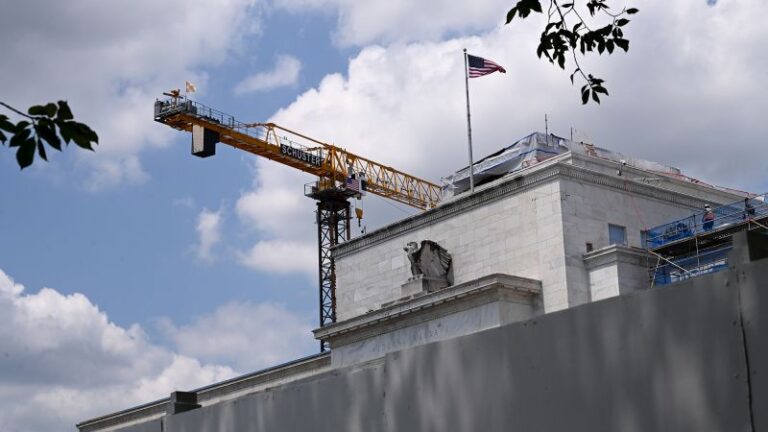Washington
—
For the past 32 years, the Federal Reserve’s decisions on interest rates have almost always been unanimous, with the occasional dissent from a lone policymaker. That might not be the case this week.
The Fed is expected to keep rates on hold at the conclusion of its two-day policy meeting on Wednesday — its fifth consecutive pause — but it could draw dissents from two members of the central bank’s Board of Governors: Fed Governor Christopher Waller and Fed Vice Chair for Supervision Michelle Bowman.
If Waller and Bowman dissent, as many analysts expect, it would be the first time two Fed governors have simultaneously done so since 1993. Waller and Bowman have said publicly that the Fed should put aside its concerns that President Donald Trump’s tariffs could boost inflation, and the central bank should resume rate cuts this month to keep the labor market intact.
“We should not wait until the labor market deteriorates before we cut the policy rate,” Waller said on July 17 at an event in New York, adding that officials “should look through tariff effects and focus on underlying inflation, which seems to be close to the (Fed’s) 2% goal.”
The division among policymakers illustrates the extraordinary and uncomfortable moment the Fed is in: waiting for clarity on how Trump’s trade war is affecting the US economy while enduring unrelenting pressure from the White House to lower rates.
Fed Chair Jerome Powell has been attacked repeatedly by Trump and his allies for months because central bankers have held off lowering rates so far this year to see how Trump’s policies affect the US economy. He is set to take questions from reporters on the central bank’s latest decision at 2:30 p.m. ET.
So far, the impact of Trump’s tariffs on inflation has been limited and the labor market has continued to chug along.
Inflation has remained tame largely because of strategic decisions businesses have made to steer through Trump’s ever-evolving trade war, economists say.
“They’re holding off on raising prices for as long as they can because the tariffs could change and there was also this front-loading of imports in the first quarter, so some companies have these less expensive inventories they’re still drawing from,” said Veronica Clark, an economist at Citigroup. She added that some businesses have also chosen to absorb higher costs instead of jacking up consumer prices.
Businesses are indeed employing various strategies to deal with Trump’s tariffs, but one of them isn’t shedding workers. Unemployment stood at a low 4.1% in June and new applications for unemployment benefits remain relatively low, according to Labor Department data.
Overall, the job market remains in decent shape, for now, but that also means most Fed committee members have said there isn’t any urgency to step in with a rate cut to stimulate the economy. In addition to fighting inflation, the Fed is also responsible for maintaining the labor market’s strength.
“We’re going to see an orderly slowdown in the second half of the year precisely because we’re not seeing anything super concerning in the labor market,” said Sarah Wolfe, senior economist at Morgan Stanley Wealth Management. “But we’re looking at companies’ (earnings call) transcripts to see if they’re looking towards layoffs.”
Wednesday’s decision probably won’t sit well with Trump.
The president continues to call for supersized rate cuts, saying that the Fed not lowering rates is forcing the federal government to make massive interest payments on its debt. (The Fed doesn’t consider the government’s finances when setting rates.)
Earlier this month, the Trump administration seized on the Fed’s $2.5 billion renovation of its headquarters in Washington, DC to pile more pressure on Powell to lower borrowing costs. Trump backed off from his criticism of the Fed’s management of the project after touring the renovation site last week.
Still, the Trump administration is adamant on transforming the world’s most powerful central bank — and it has already begun that process by elevating Bowman as a vice chair to lead banking regulation. The Fed is currently reviewing a set of banking rules that came about in the aftermath of the global financial crisis of 2008.
“What we need to do is examine the entire Federal Reserve institution and whether they have been successful,” Treasury Secretary Scott Bessent told CNBC on July 21. “All these PhDs over there, I don’t know what they do.”


